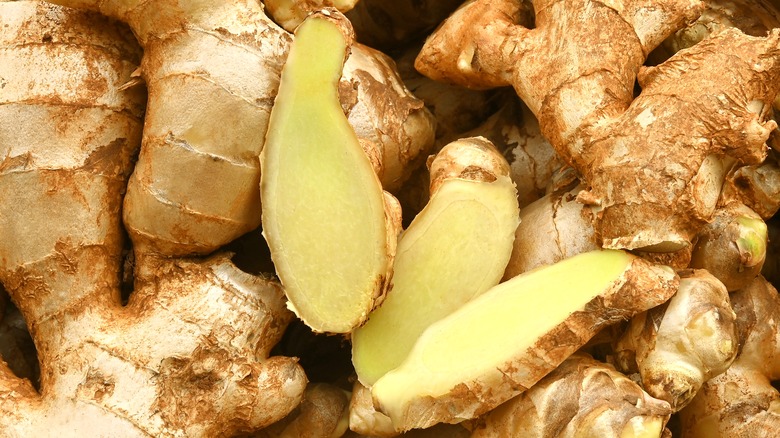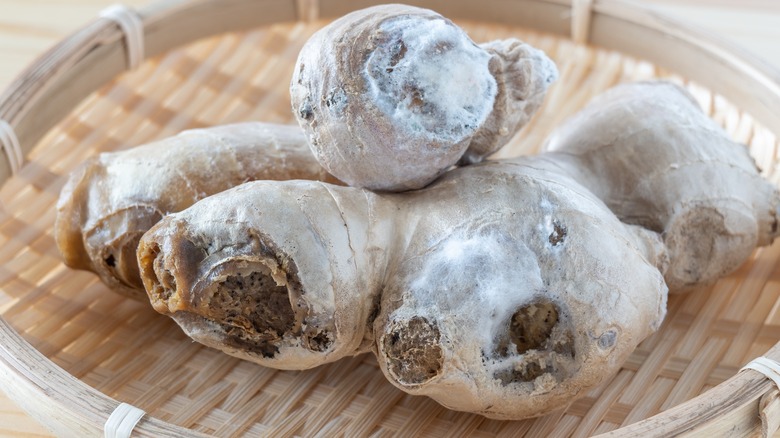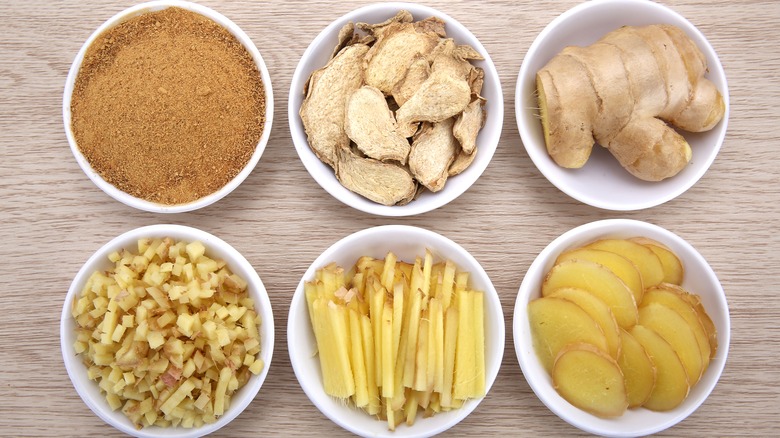The Best Ways To Tell If Ginger Has Gone Bad
From savory soups to chewy cookies, ginger is one of those staple ingredients most people tend to already have in some form (often, a jar at the back of their spice cabinet). Desserts like pumpkin pie and gingerbread may be its most notable role in the U.S., but the spiced ingredient also shines in savory dishes, drinks, and even as a sweet-yet-spicy candy. For green juice or smoothie aficionados, a bit of fresh ginger and lemon can lessen that grassy flavor and give your drink a bit of a kick. The root plays an important role in condiments, as well, as featured in chermoula or spicy peanut sauce.
Its unique flavor has been delighting taste buds for thousands of years, per the McCormick Science Institute, and has been prized in the past — as it still is today — for its many health applications. According to the Cleveland Clinic, ginger root can help with inflammation and nausea, is full of antioxidants, and even works to help regulate blood sugar. But using fresh ginger (versus the shaker of powder) may lead to a unique challenge: how to tell when your knob of ginger has gone bad.
Visual cues your ginger is past its prime
When stored properly, fresh ginger can last about a week at room temperature, a month in the refrigerator, and up to three months if it has been frozen( via EatByDate). Ginger should typically have a papery, light brown outer layer, while its inside is pale yellow and fibrous. It will appear knobby and gnarled, but should still be firm. If ginger root is soft, wrinkly, or has any appearance of mold, then it's time to visit the market for a new supply.
To keep fresh ginger root looking good, it's best to keep it whole with the skin on for as long as possible. If the root has already been peeled then the best bet is to keep it in a lidded jar or sealed bag, stored in the fridge. Freezing is also a tried and true method of preserving ginger's freshness, while also making it slightly easier to grate when it's time to use. Whether in the fridge or freezer, you'll want to check to see if any portions exposed to air have darkened in color, as this is another ginger red flag.
Trust your senses
Ginger's strong taste and noticeable aroma are clear identifiers of the root, and the freshest ginger will be hard to miss with these metrics. Armed with this information, you can fairly easily use your sense of smell or taste to tell when fresh ginger may be on its way out. (Naturally, you will only be able to use your sense of smell at the store, but if any ginger you have at home passes the visual fresh test and you're still unsure, feel free to sample a bite.)
Spicy and sharp, Fresh From the Gardens explains low-quality ginger's scent will be less pronounced, so if it's difficult to smell or taste that signature zing, you may want to send your root to the compost and start anew. While bland ginger is unlikely to make you sick, the kick it adds to food is memorable and unique — whether highlighted in a fancy ginger sage martini or used to create chicken stir-fry. You'll want to be sure you're using the best ginger available, otherwise your dish is likely to be missing that spiced zip you're looking for.


